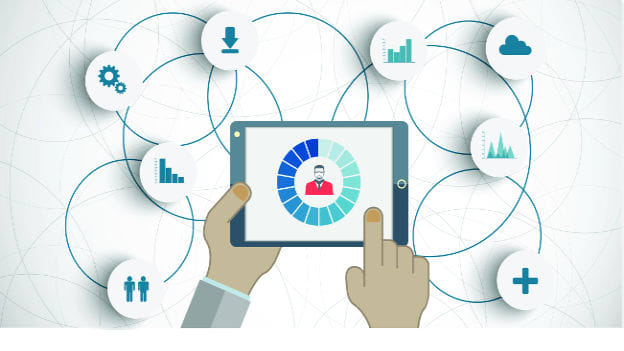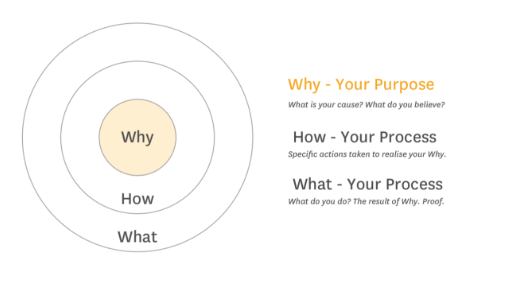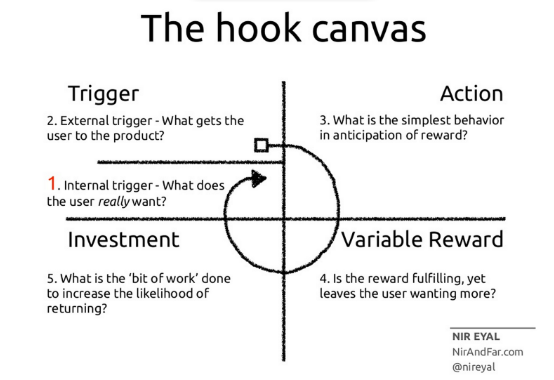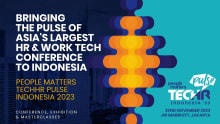Applying product thinking to HR

It was a usual day at work and as I was talking to one of my colleagues in Product management, he asked with a smirk “What new HR initiatives are you planning to push on us this quarter?” Irked with this, I asked him “What initiatives are you planning to push on your consumers”. And he explained to me with pride “We are solving a customer problem which will enable us to enhance NPS by 700 bps”. We then went on to talk about the solution they are driving and I was super excited. Post this conversation, as I reflected about it I realised we hear from business leaders very often that it looks like HR is trying to launch initiatives and push the businesses to drive adoption. That surprised me and made me think - Have we heard anyone say “Mark Zuckerberg is launching Facebook and is pushing us to sign up to Facebook and drive adoption”? What’s different? I started researching about building great products and finally gained the insight- Product thinking is the key differentiator!
What is Product Thinking? It is the methodical approach to taking a journey from a problem of users to the solution space of the business thereby bridging the gap between the user need and business value. As Simon Sinek lays out in his Golden Circle - Start with Why, know about How and then arrive at What.

True to this, a good product manager will always articulate clear answers to the following before talking about the solution itself-
- What is the problem we are trying to solve? Why is there a need for something different?
- Who are my user personas?
- How do I assess the needs,wants,desires of these personas and create value for them?
- What business and user metrics am I moving?What are the lead indicators,lag indicators?
Why should this be different for HR professionals? In my view these two should not be any different. The reason a product like Facebook does not need a push is that it has clearly identified the “Why” and the needs of its user personas- The underlying need of humans to belong, to be connected to a community. With this clear articulation, the product designs the features, tests them, gains user validation and deploys them. The validations could include A/B testing, beta metrics like no of sign ups, time spent on each feature and so on. The learning is derived from these leading indicators and the pivots happen to make them more user friendly thereby showing needle movement on the leading indicator metrics. This methodical approach(How) helps any Product to create a pull for users and thereby bringing them closer to generating business value(What).
To elaborate more on How, I would like to bring into perspective the “Hook” model by Nir Eyal.The model lays out clearly on how successful products get the users “Hooked” through a methodical approach that involves creating successful triggers to get the users to adopt the product, use these triggers to shape their behaviour and nudging them through the positive and negative reinforcements to ensure users willingly invest effort into the action.

If successful products are all about identifying right triggers to appeal to user’s needs and to shape a behaviour to achieve desired business impact, why can't it be deployed to HR management. Some of the key objectives of HR today in organizations revolve around shaping behaviours to drive org changes , building capabilities,attracting talent and enabling employee experience. There is a clear scope of articulating right problem statements in these areas, identifying user personas( in employees, talent segments), assessing their needs and identifying clear metrics to impact. Once this is done successfully, the “How” can be defined by identifying right triggers catering to the needs of the targeted audience(internal employees/managers/leaders/potential candidates) , enabling behaviour shapers and including right reinforcements along the journey to start making the solution more attractive and meaningful to the user and business. To elaborate this let me take an example-
Manager capability is the most talked about subject these days- The usual approach HR professionals end up taking is to have some workshops,training done for managers (pushing for attendance :)) , do pre-post tests and expect different results- The ultimate result? Managers end up being frustrated on having to do these flashy interesting sessions every year and yet at the end there is no needle which seems to move despite putting in a couple of dollars and valuable time by organizations- No seeming benefit for either user or business. And hence it becomes like HR pushing for an initiative whose success metrics seem to be limited to %participation and %change in pre-post scores.
Now lets approach this in a slightly different manner. If Manager capability is the concern the problems are as below-
- Managers are not having regular 1-0-1 connects with teams
- When manager connects with the team, these are about project updates
- Manager is not able to act as the coach
- Manager is not having career conversations
Lets take problem statement 1) and apply 5 - why to this and see the underlying causes-
- Why : Lack of discipline to have 1-0-1 cadence
- Why : Busy with other priorities-Time is limited
- Why: Belief that 1-0-1 s are not as important as tasks/projects
- Why: Need: To be recognised and be ahead of the race in the aspects that matter the most to get ahead in career and no visible reward or recognition for putting in extra effort in this area
- Why: Need to be seen as best by the organization
Now let's look at How to solve this particular problem-
- Identifying trigger: The underlying need is to see a visible reward/recognition for the same. Craft OKR of having monthly 1-0-1 and communicating that there will be quarterly monitoring of the OKR
- Action: Let managers have 1-0-1, HR can take feedback through dipsticks and assign scores to each manager on efficacy. Provide avenues of capability workshops and coaching opportunities to managers who may need help
- Variable Reward: Publish quarterly dashboards, include surprise elements-Recognise best ones, share individualised feedback to the ones with lower score
- Investment: The managers see their individual scores, realise the need to improve when they see peers getting recognised or them getting individualised feedback scores or when they see they are not amongst the best. They start asking for capability inputs through workshops and coaching
With this approach we have solved the problem of making the intervention meaningful and not “HR Push” to the users(managers in this case).
Now articulating the What of this intervention-
- Lead indicators: Needle movement on individual manager perception scores, Engagement scores, People manager effectiveness scores.
- Lag indicators: Needle movement on Employee NPS ,Attrition.
With each cycle of measuring leading indicators, L&D teams can get sharp inputs on what aspects of the development journey(manager capability workshops,coaching journeys,coaching skill development etc). With each iteration the gap between manager’s needs and the business value keeps getting bridged thereby creating a meaningful outcome.
Now when a business leader asks me what HR initiatives are you planning to push - I can proudly say “I am solving your problem of having engaged and motivated teams that will help move your manager perception scores up by 500 bps!”

















